
Sarah Zielinski wanted to be a marine biologist when she was growing up, but after graduating from Cornell University with a B.A. in biology, and a stint at the National Science Foundation, she realized that she didn’t want to spend her life studying just one area of science — she wanted to learn about it all and share that knowledge with the public. In 2004, she received an M.A. in journalism from New York University’s Science, Health and Environmental Reporting Program and began a career in science journalism. She worked as a science writer and editor at the Journal of the National Cancer Institute, the American Geophysical Union’s newspaper Eos and Smithsonian magazine before becoming a freelancer. During that time, she started her blog, Wild Things, and moved it to Science News magazine, and then became an editor for and frequent contributor to Science News Explores. Her work has also appeared in Slate, Science, Scientific American, Discover and National Geographic News. She is the winner of the DCSWA 2010 Science News Brief Award and editor of the winner of the Gold Award for Children’s Science News in the 2015 AAAS Kavli Science Journalism Awards, “Where will lightning strike?” published in Science News Explores. In 2005, she was a Marine Biological Laboratory Science Journalism Fellow.

Trustworthy journalism comes at a price.
Scientists and journalists share a core belief in questioning, observing and verifying to reach the truth. Science News reports on crucial research and discovery across science disciplines. We need your financial support to make it happen – every contribution makes a difference.
All Stories by Sarah Zielinski
-
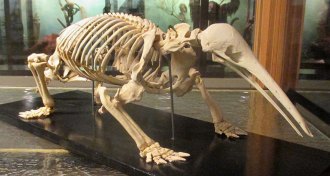 Animals
AnimalsHow animal poop could be key in solving echidna mystery
The western long-beaked echidna hasn’t been seen in Australia in 10,000 years. But DNA in scat could reveal its presence.
-
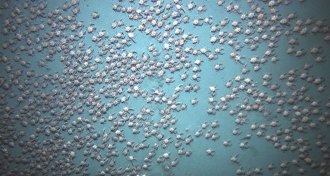 Animals
AnimalsScientists find a crab party deep in the ocean
A trip to check out the biodiversity off the coast of Panama revealed thousands of crabs swarming on the seafloor.
-
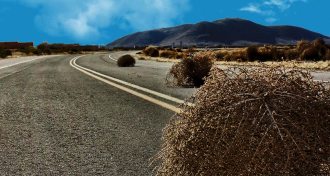 Plants
PlantsNew species of tumbleweed is just as bad as its parents
Two species of invasive tumbleweeds hybridized into a third. A new study finds it probably will be invasive, too.
-
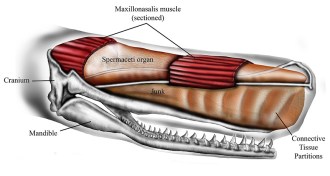 Animals
AnimalsA sperm whale’s head is built for ramming
Computer simulations of a sperm whale’s head show that an organ called the junk may help protect the brain when ramming other whales — or ships.
-
 Life
Life‘Wild Ways’ showcases need for wildlife corridors
The TV documentary 'Wild Ways' shows how wildlife corridors bridge the gap between isolated populations of animals.
-
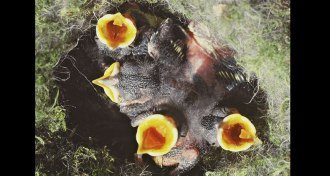 Animals
AnimalsMama birds pay attention to more than chicks’ begging
Whether a mama bird decides to feed her offspring depends on more than just who begs most — her environment is a big factor, a new study finds.
-
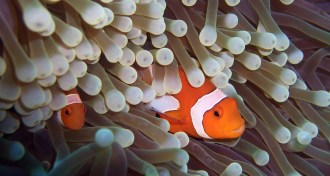 Animals
AnimalsIn the Coral Triangle, clownfish figured out how to share
In the Coral Triangle in Southeast Asia, an area of rich biodiversity, clownfish species often share anemones, a new study finds.
-
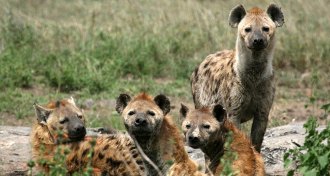 Animals
AnimalsWhy some male hyenas leave and others are content to stay home
Having access to enough females, and a mom to help, can keep a male hyena from leaving his clan.
-
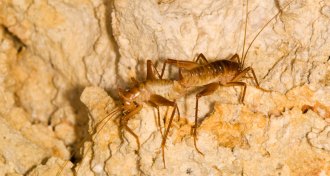 Animals
AnimalsUnknown species hide among Texas cave crickets
A study of population structure among a genus of cave crickets reveals that new species are waiting to be discovered.
-
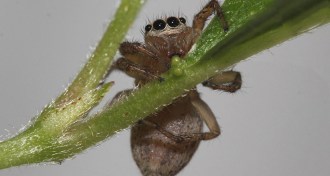 Animals
AnimalsSpider diet goes way beyond insects
Veggie-eating spiders have been found on every continent except Antarctica, a new study notes.
-
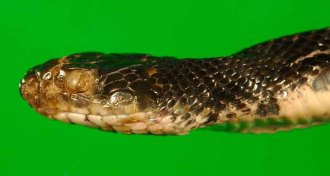 Animals
AnimalsSnake fungal disease spreading in eastern United States
A decade after snake fungal disease was first discovered, it has now been found in its 16th U.S. state.
-
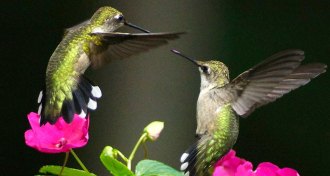 Animals
AnimalsTiny hummingbirds can fly a long, long way
Some ruby-throated hummingbirds may be capable of flying more than 2,000 kilometers without stopping, scientists calculate.